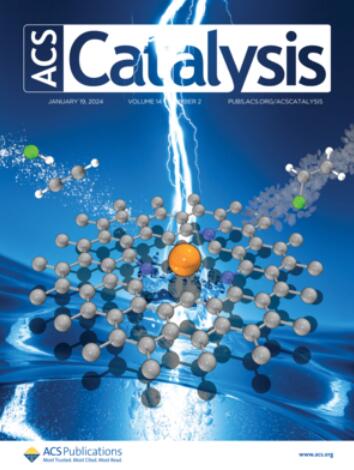Unprecedented Dual Radical Initiation in Visible-Light Photoredox-Catalyzed X–H (X = Si and B) Insertions of Sulfoxonium Ylides
IF 11.3
1区 化学
Q1 CHEMISTRY, PHYSICAL
引用次数: 0
Abstract
Unusual chameleonic roles of sulfoxonium ylides, acting as both radical initiators and radical acceptors, are revealed via synergistic experimental and computational studies for the visible-light photoredox-catalyzed Si–H insertion of sulfoxonium ylides with hydrosilanes. Remarkably, when sulfoxonium ylides play the role of radical initiator, an unprecedented dual radical initiation is proposed, in which two radical species, generated in a photoredox catalytic loop via single-electron oxidation and single-electron reduction, respectively, can both trigger H atom transfer processes with hydrosilanes to afford a silyl radical. Subsequently, the yielded silyl radical can attack the C═S moiety of sulfoxonium ylide to fulfill a radical chain mechanistic pathway to furnish the desired product, where sulfoxonium ylides perform as a radical acceptor. This protocol employs easily accessible reagents and demonstrates a wide substrate scope with satisfied yields under benign conditions. Additionally, the construction of C–B bonds via analogous visible-light photoredox-catalyzed B–H insertion of sulfoxonium ylides with amine boranes is also realized.

求助全文
约1分钟内获得全文
求助全文
来源期刊

ACS Catalysis
CHEMISTRY, PHYSICAL-
CiteScore
20.80
自引率
6.20%
发文量
1253
审稿时长
1.5 months
期刊介绍:
ACS Catalysis is an esteemed journal that publishes original research in the fields of heterogeneous catalysis, molecular catalysis, and biocatalysis. It offers broad coverage across diverse areas such as life sciences, organometallics and synthesis, photochemistry and electrochemistry, drug discovery and synthesis, materials science, environmental protection, polymer discovery and synthesis, and energy and fuels.
The scope of the journal is to showcase innovative work in various aspects of catalysis. This includes new reactions and novel synthetic approaches utilizing known catalysts, the discovery or modification of new catalysts, elucidation of catalytic mechanisms through cutting-edge investigations, practical enhancements of existing processes, as well as conceptual advances in the field. Contributions to ACS Catalysis can encompass both experimental and theoretical research focused on catalytic molecules, macromolecules, and materials that exhibit catalytic turnover.
 求助内容:
求助内容: 应助结果提醒方式:
应助结果提醒方式:


